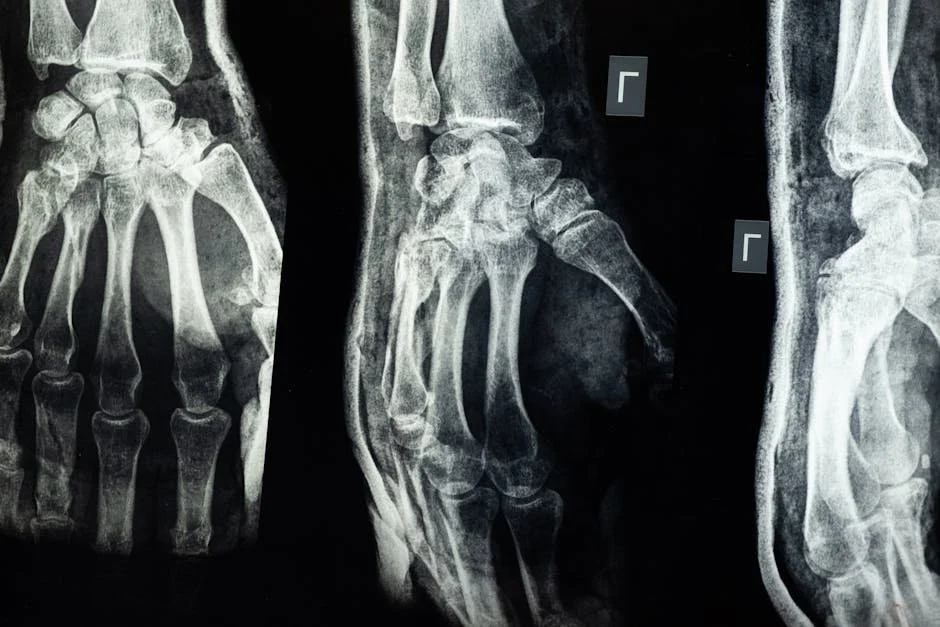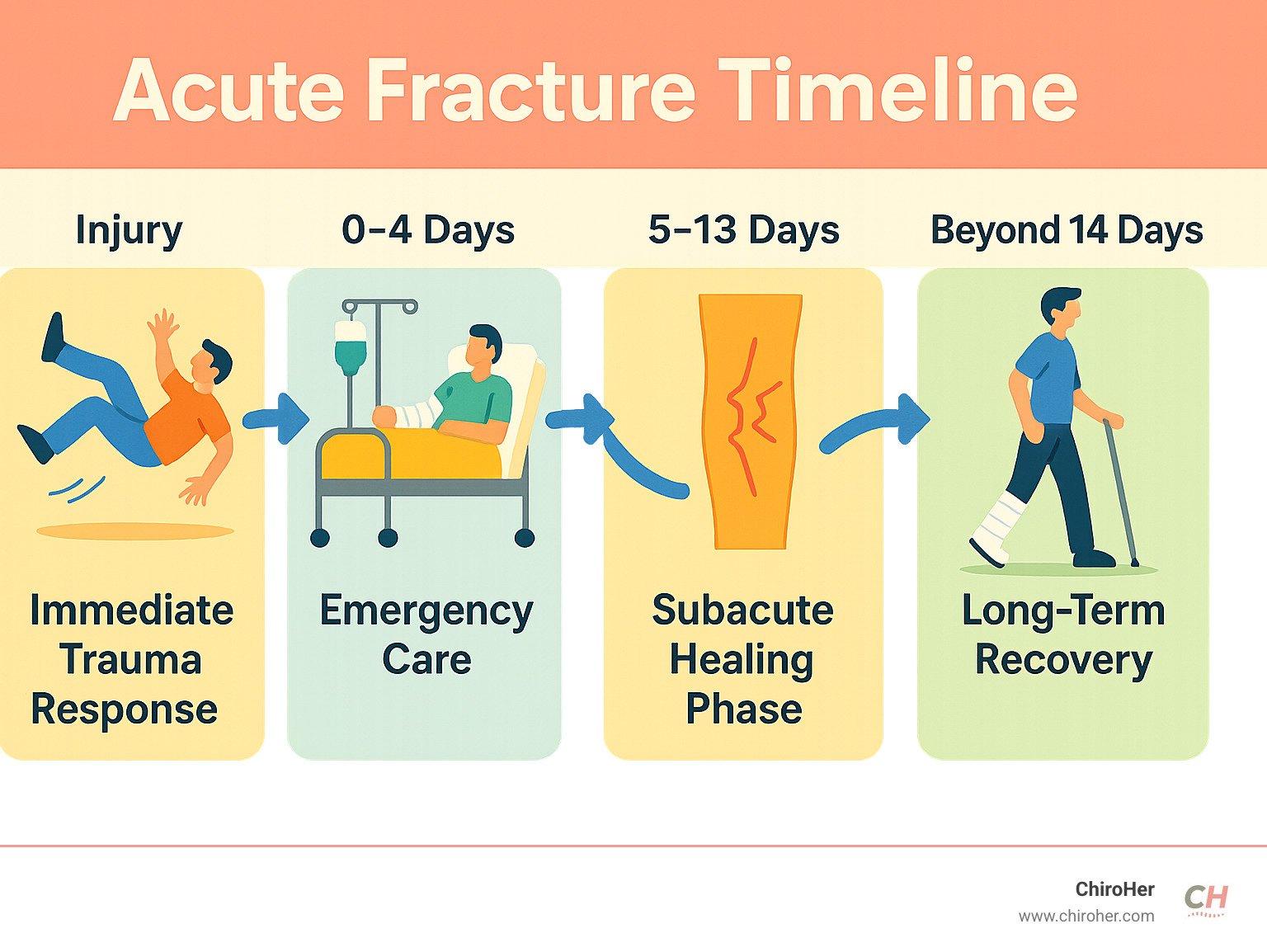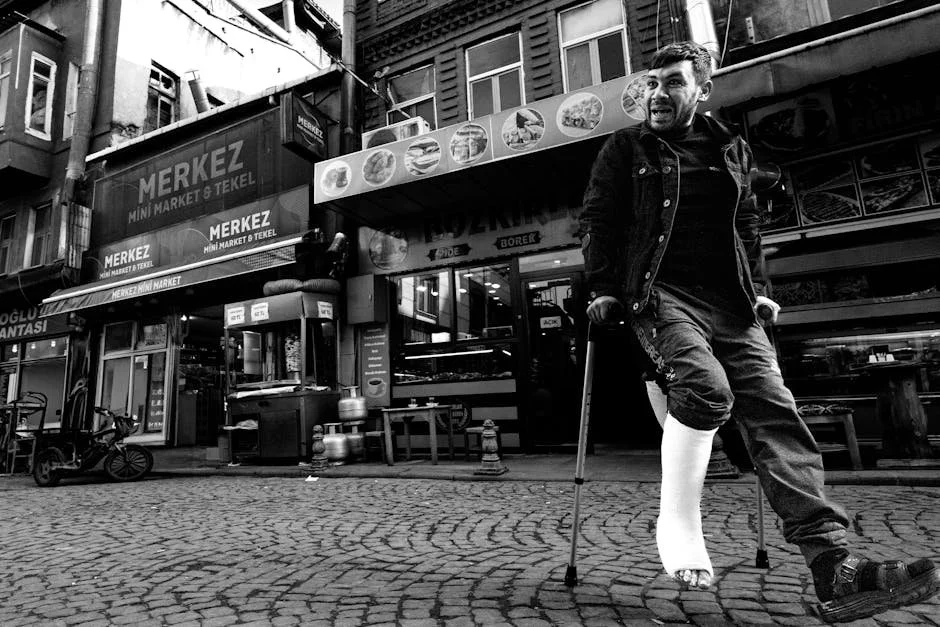Acute Fractures Explained – When Bones Take a Sudden Break
Understanding What Happens When Bones Break Suddenly
Acute fracture meaning refers to a bone break that occurs suddenly from traumatic injury, typically within the first four days after the incident. Here's what defines an acute fracture:
Sudden onset - Happens immediately from trauma like falls, car accidents, or sports injuries
Time-based classification - Occurs within 0-4 days (versus subacute at 5-13 days, chronic at 14+ days)
Traumatic cause - Results from high-force impact that exceeds the bone's breaking point
Emergency nature - Most acute fractures require immediate medical attention
Unlike stress fractures that develop gradually from repetitive use, acute fractures happen in an instant when bones absorb more force than they can handle. The pain from an acute fracture is typically severe and immediate, often feeling deep or sharp at the fracture site.
I'm Dr. Michelle Andrews, founder of ChiroHer in Oklahoma City, and I regularly work with patients recovering from acute fractures and other traumatic injuries. Understanding acute fracture meaning helps my patients recognize when immediate medical care is needed and how chiropractic care can support their recovery.
Understanding Acute Fracture Meaning
When I explain acute fracture meaning to patients at my Oklahoma City clinic, I tell them it's like the difference between a sudden thunderclap and a slow rumble. An acute fracture happens in an instant when your bone can't handle the force hitting it - whether that's from a fall, car accident, or awkward landing during sports.
The word "acute" in medical terms means something that's happening right now, not something that's been building up over time. These fractures occur within the first four days after injury, and they demand immediate attention. Unlike other bone problems that sneak up on you, acute fractures announce themselves with unmistakable pain.
The healing timeline follows a predictable pattern. The acute phase lasts those first few days when your body is responding to the trauma with intense pain and swelling. Then comes the subacute phase from days 5-13, when your body starts forming the blood clot that will eventually become new bone. Finally, the post-acute phase begins around two weeks, marking the start of true bone remodeling and rehabilitation.
Acute Fracture Meaning vs Stress and Chronic Fractures
The difference between acute fractures and other bone injuries often confuses my patients, but understanding these distinctions is crucial for proper treatment and realistic recovery expectations.
Think of acute fractures as the result of overwhelming force hitting your bone all at once. It's like trying to break a stick by hitting it with a hammer - the force is immediate and decisive. These injuries happen from single traumatic events like falls, car accidents, or sports collisions.
Stress fractures tell a completely different story. They're more like bending that same stick back and forth repeatedly until it finally gives way. These develop gradually from repetitive motion or overuse, particularly common in athletes who put their bones through repetitive high-impact activities.
Chronic fractures represent the third category - these are breaks that have been around for more than 14 days or fractures that simply won't heal properly.
Aspect Acute Fractures Stress Fractures Onset Sudden, immediate Gradual, progressive Cause Single traumatic event Repetitive overuse Pain Severe, immediate Dull, worsening over time Treatment urgency Emergency care needed Can often wait for scheduled care
Pain Stages After Acute Fractures
The pain experience after an acute fracture follows a predictable pattern that I help patients understand so they know what to expect during recovery.
Acute pain hits immediately after the fracture and often feels unlike anything you've experienced before. Patients describe it as sharp, deep, or excruciating. This pain serves as your body's emergency alarm system, forcing you to protect the injured area from further damage.
Sub-acute pain emerges in the weeks following your initial injury and often surprises patients because it feels different from that first intense pain. This discomfort typically comes from the immobilization itself - your muscles weaken from disuse, joints get stiff from lack of movement, and surrounding soft tissues remain inflamed.
Chronic pain can persist long after your bone has technically healed, affecting some patients months or even years later. This ongoing discomfort might result from nerve damage during the initial injury, scar tissue formation, or aggravation of underlying arthritis that was stirred up by the trauma.
Causes and Risk Factors
Your bones are strong, but a sudden force can still push them past their limit. The most frequent causes I see in clinic are:
Falls on ice, stairs, or uneven ground
Motor-vehicle crashes that deliver high energy in milliseconds
Sports collisions and awkward landings
Direct blows from tools or contact sports
Some people break bones more easily than others. Age-related bone loss, osteoporosis, long-term steroid use, and a history of previous fractures all raise the odds.
Common Traumatic Scenarios
Twisting an ankle stepping off a curb can spiral the lower leg bones.
A stick, puck, or hard ball striking a fingertip can shatter small hand bones.
High-speed bike or car crashes often cause several fractures at once.
High-Risk Activities
Basketball, football, skiing, and even basic ladder work around the house top my list for fracture referrals. Good training habits and sensible equipment cut risk, but accidents still happen. For up-to-date numbers, see current scientific research on sports injury trends.
Signs, Diagnosis, and Types of Acute Fractures
Acute fractures shout for attention. Key red flags include:
Sudden, severe pain that worsens with motion or pressure
Rapid swelling and bruising
Visible deformity or loss of function
Numbness, tingling, or absent pulse below the injury
Open wounds with bone showing, loss of circulation, or uncontrolled bleeding demand an emergency room visit right away.
Imaging and Classification
X-ray: first-line and usually enough
CT: complex areas like spine or pelvis
MRI: hidden fractures or soft-tissue damage
Fractures are labeled closed or open, displaced or non-displaced, complete or incomplete. Pattern words—transverse, oblique, spiral—tell us how the force acted on the bone. These details guide treatment and predict healing time. If you are comparing bone breaks with other injuries, our article on the Difference Between Sprains and Strains can help.
Treatment, Healing Timeline, and Rehabilitation
First the bone must be lined up (reduction), then held still (immobilization) so nature can rebuild it.
Closed reduction and a fiberglass cast work for many simple breaks.
Surgery with plates, screws, or an intramedullary nail is chosen when perfect alignment or early motion is critical.
Most fractures knit enough to resume daily tasks in 6-8 weeks, but full remodeling continues for months. Children heal faster; health issues like diabetes or smoking slow things down.
Immediate First Aid
Remember RICE: rest, ice 15-20 minutes at a time, compression, and elevation. Splint the limb and avoid bearing weight until it is checked by a professional.
Rehab and Chiropractic Support
After the cast comes off, stiffness, weakness, and altered movement patterns linger. Physical therapy restores range and strength, while our gentle chiropractic adjustments ease joint restrictions and muscle tension. For lingering joint aches, see how a Chiropractor for Joint Pain can help. Soft-tissue problems related to the break are covered in Can Chiropractors Treat Soft Tissue Injury?.
Prevention and When to Seek Emergency Care
Strong bones and safe habits make fractures far less likely.
Eat 1,000–1,200 mg calcium and 600–800 IU vitamin D daily.
Do weight-bearing exercise such as walking or light jogging most days.
Quit tobacco and keep alcohol to fewer than three drinks per day.
Smart Training and Home Safety
Replace worn-out athletic shoes and add protective gear—helmets, wrist guards, or shin pads—when the sport calls for it.
Increase training loads by no more than 10% each week and mix activities to avoid overuse.
At home, improve lighting, secure rugs, add grab bars, and keep pathways clear.
Know the Emergency Signs
Head to the ER for open fractures, loss of pulse or feeling below the injury, uncontrolled bleeding, or an obvious severe deformity. Unsure? Get checked—it is easier to rule out a fracture than to fix one that healed poorly.
Stay current on new ideas with the federal database of clinical trials on sports injury.
Frequently Asked Questions About Acute Fracture Meaning
What does an acute fracture feel like?
When a bone breaks suddenly, the pain is unmistakable. Most patients describe it as immediate, severe pain that feels sharp, deep, or excruciating. Many tell us they actually heard or felt a "snap" or "pop" when the bone broke - a sound that's often impossible to forget.
The pain typically worsens with any movement or pressure on the injured area. You'll likely notice rapid swelling and bruising around the fracture site within minutes. Beyond the obvious pain, you'll probably find that you can't use the injured area normally. A fractured leg won't bear weight, and a fractured wrist won't grip objects.
Some patients describe a grinding or grating sensation called crepitus when they try to move the injured area. You might also experience numbness or tingling if the fracture affects nearby nerves - a sign that requires immediate medical attention.
How long does an acute fracture take to heal?
The healing timeline for acute fractures varies significantly, but most fractures require a minimum of six to eight weeks to heal sufficiently for normal activities. However, complete healing and bone remodeling can take months or even years.
Your body follows a predictable healing pattern. During the first two weeks, blood clots form and your body mounts an inflammatory response. From two to six weeks, soft callus formation begins as new bone tissue starts bridging the fracture gap. The six to twelve week period brings hard callus formation as the bone strengthens.
Several factors influence how quickly you'll heal. Age plays a major role - children heal much faster than adults. Fracture location matters too, as some bones naturally heal more quickly than others. Your overall health impacts healing speed, with conditions like diabetes or osteoporosis slowing the process. Most importantly, following your doctor's instructions dramatically affects how well and quickly you recover.
Can an acute fracture turn into a chronic problem?
Unfortunately, acute fractures can sometimes develop into chronic problems, though this is relatively uncommon with proper treatment. Several complications can lead to long-term issues that we help address in our Oklahoma City clinic.
Nonunion occurs when the bone fails to heal properly, leaving a permanent gap or instability. This happens in about 5-10% of fractures and may require additional surgery or bone grafting to resolve.
Malunion happens when the bone heals in an improper position, potentially causing ongoing pain, limited function, or arthritis. Chronic pain can persist even after the bone has healed completely. This may result from nerve damage during the initial injury, scar tissue formation around the fracture site, or development of arthritis in nearby joints.
The good news is that most acute fractures heal completely without long-term problems when they receive appropriate treatment. Early intervention, proper immobilization, and comprehensive rehabilitation significantly reduce the risk of chronic complications.
At our Oklahoma City clinic, we regularly help patients who are dealing with lingering effects from old fractures. Our holistic approach addresses not just the fracture site but also the compensatory movement patterns and muscle imbalances that can develop during the healing process.
Moving Forward After a Sudden Break
Bone healing is only the first milestone. Months in a cast can leave stiff joints, weak muscles, and movement habits that linger. Our team in Oklahoma City, serving Yukon, Edmond, Nichols Hills, Del City, Mustang, and Moore, blends chiropractic, soft-tissue work, and guided exercise to restore normal motion and rebuild confidence.
Ready to feel like yourself again? Call ChiroHer at 405-213-1072 to schedule your consultation.







